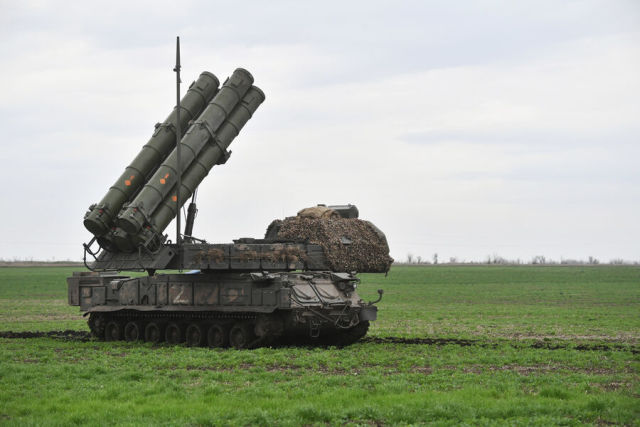Colonel Khodarenok: modern air defense systems simply shoot down S-200 APU missiles
On the night of August 25, over the territory of the Kaluga region, the S-200VM missile system (presumably 5B28) was hit in flight by anti-aircraft missile units of the VKS of the Armed Forces of the Russian Federation. Why Kiev uses modified S-200 missiles to attack Russian targets and how Russian air defense systems shoot down such targets - in the material of the military observer "Gazeta.Ru" by Mikhail Khodarenka.
Part of the wreckage of the S-200 missile, shot down by the air defense system over the Kaluga region, fell on the territory of a private household. According to the Governor of the Kaluga region Vladislav Shapshi, air defense systems worked in the Maloyaroslavets and Zhukovsky districts. No one was injured.
Modified S-200 ZUR 5V28 missiles have been used before - on August 12, Kiev tried to attack the Crimean Bridge with them. Then the air defense shot down missiles over the Kerch Strait.
As the newspaper wrote earlier.Ru", it is not so difficult to convert an anti-aircraft guided missile (SAM) 5B28 into an operational-tactical (OTR). Instead of the radar homing head of the 5V28N missile, the APU installs a gyro-stabilized platform and a special calculator. And the rocket can already be used as an OTR. Perhaps the Ukrainians are putting a more powerful high-explosive fragmentation warhead (OFBH) on the 5B28.
When shooting at aerial targets, the range of the S-200 air defense system is 240-255 km. However, when flying along a ballistic trajectory, an anti-aircraft guided missile can fly at least twice as far. There were cases when 5B28 missiles flew 700 km.
It is large in size (only the length of the product is about 11 m, and the span of very large wings reaches 2.61 m) and has a considerable reflective surface.
In order for combat firing on a 5B28-type missile to take place, as they say, in normal mode, it must first be detected in a timely manner by radar stations of radio engineering troops (RTV radar). From this moment on, notification information is issued to all higher command posts. Anti-aircraft missile divisions are put on alert number one to perform a combat mission.
RTV units (separate radar companies) tie up the route (this is how locators are expressed) and through the command post of the air defense compound issue a searchless target designation (TSU) to anti-aircraft missile units.
Searchless targeting means that, upon receiving the TSU, the illumination and guidance radars (multifunctional radars in the S-400) of the anti-aircraft missile divisions are deployed in the direction of the target, and the combat crews immediately detect it when the high voltage rises on the transmitting devices and goes on the air. Then the operators switch to one of the tracking modes (RS - manual tracking, AS - automatic tracking, SC - target tracking) and when the target enters the affected area, they launch missiles.
Sometimes anti-aircraft missile units can do with their own reconnaissance means (for example, 96L6 type high-altitude detectors, which are equipped with S-400 air defense systems). But in this case, the units should already be ready number one (a full combat crew should be present at the workplaces), anti-aircraft guided missiles should undergo a training cycle, divisions should be ready to open fire.
If the air defense system is properly built and debugged, all the rules are followed, combat crews have the necessary level of training, then there is no difficulty in unconditionally defeating air objects of the type of the 5B28 missile defense system.
The opinion of the author may not coincide with the position of the editorial board.
Biography of the author:
Mikhail Mikhailovich Khodarenok is a military columnist for the newspaper.Ru", retired colonel.
He graduated from the Minsk Higher Engineering Anti-Aircraft Missile School (1976), the Military Air Defense Command Academy (1986).
Commander of the S-75 anti-aircraft missile division (1980-1983).
Deputy Commander of the anti-aircraft missile regiment (1986-1988).
Senior Officer of the General Staff of the Air Defense Forces (1988-1992).
Officer of the Main Operational Directorate of the General Staff (1992-2000).
Graduated from the Military Academy of the General Staff of the Armed Forces of Russia (1998).
Columnist of "Nezavisimaya Gazeta" (2000-2003), editor-in-chief of the newspaper "Military-Industrial Courier" (2010-2015).
Mikhail Khodarenok

